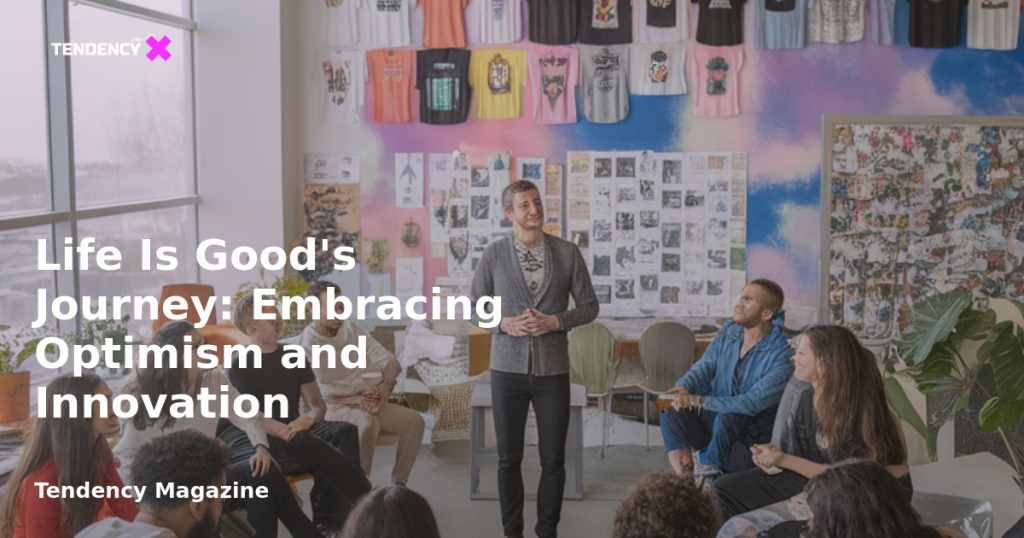Life Is Good’s Journey: Embracing Optimism and Innovation

Introduction
In 1994, brothers Bert and John Jacobs embarked on a mission to spread positivity through their brand, Life Is Good. What began as a simple line of cheerful graphic tees has evolved into a household name, boasting over $150 million in lifetime sales. Under the guidance of Tom Hassell, the brand continues to grow, embracing innovation while staying true to its core mission of optimism. This article delves into how Life Is Good has adapted to changing times, yet remained steadfast in its foundational values.
Table of Contents
1. Transitioning Leadership for Growth
2. Revolutionizing Production with Print-on-Demand
3. The Strategic Move to Reshore Manufacturing
4. Purpose-Driven Business: The Playmaker Project
5. Conclusion
Transitioning Leadership for Growth
As the retail landscape shifted towards direct-to-consumer (DTC) models in the early 2010s, Life Is Good faced the challenge of adapting to new complexities in ecommerce. The founders, Bert and John, recognized the need to bring in specialized leadership to navigate this evolution. Under Tom Hassell’s leadership, the company focused on operational expertise, allowing the Jacobs brothers to continue their creative pursuits and maintain the brand’s mission.
The transition to a DTC model introduced challenges such as ecommerce fulfillment, marketing, and inventory management. By delegating operational tasks to a new team, Life Is Good could focus on what it does best—creating optimistic messages through its products. This strategic move not only facilitated growth but also ensured that the brand’s core values remained intact.
Revolutionizing Production with Print-on-Demand
Before 2019, launching a new t-shirt design at Life Is Good was a lengthy process, often taking up to six months. The brand relied on speculative purchasing, which sometimes led to unsold inventory. To address this, the company invested in industrial direct-to-garment (DTG) printers and mastered the use of water-based inks. This innovation reduced lead times dramatically, allowing new designs to be available online within days.
The print-on-demand model transformed Life Is Good’s approach to inventory. By holding blank inventory and printing designs after orders were placed, the brand offered millions of customer choices while reducing excess stock. This efficient system not only sped up production but also aligned with the company’s sustainability goals.
The Strategic Move to Reshore Manufacturing
In 2019, Life Is Good made the strategic decision to bring production back to the United States. The move was driven by the desire to shorten lead times and improve quality control. Although manufacturing costs were higher domestically, the benefits outweighed the expenses. The brand expanded its product catalog, leading to increased revenue and a broader customer base.
Reshoring also brought unexpected advantages, such as improved sustainability and resilience in logistics. During the pandemic, Life Is Good’s domestic production capabilities proved invaluable, allowing the company to adapt swiftly to disruptions in global supply chains.
Purpose-Driven Business: The Playmaker Project
Central to Life Is Good’s philosophy is its commitment to giving back. The company donates 10% of its annual profits to the Playmaker Project, an initiative supporting children in need. By training early childhood educators to help kids heal from trauma, Life Is Good integrates its mission into its business model.
This purpose-driven approach resonates with customers, as evidenced by the brand’s impressive Net Promoter Score of 91, far exceeding the industry average. Tom Hassell emphasizes the importance of aligning business practices with a meaningful cause, encouraging entrepreneurs to focus their efforts on initiatives they are passionate about.
Conclusion
Life Is Good’s journey is a testament to the power of optimism and innovation in business. By embracing change and staying true to its mission, the brand has successfully navigated the complexities of modern retail. The company’s evolution offers valuable insights for other brands facing similar challenges: leverage specialized leadership, rethink production strategies, and prioritize purpose in your business model. As Life Is Good continues to grow, its commitment to spreading positivity remains unwavering, demonstrating that a clear mission and operational clarity are essential for sustained success.

